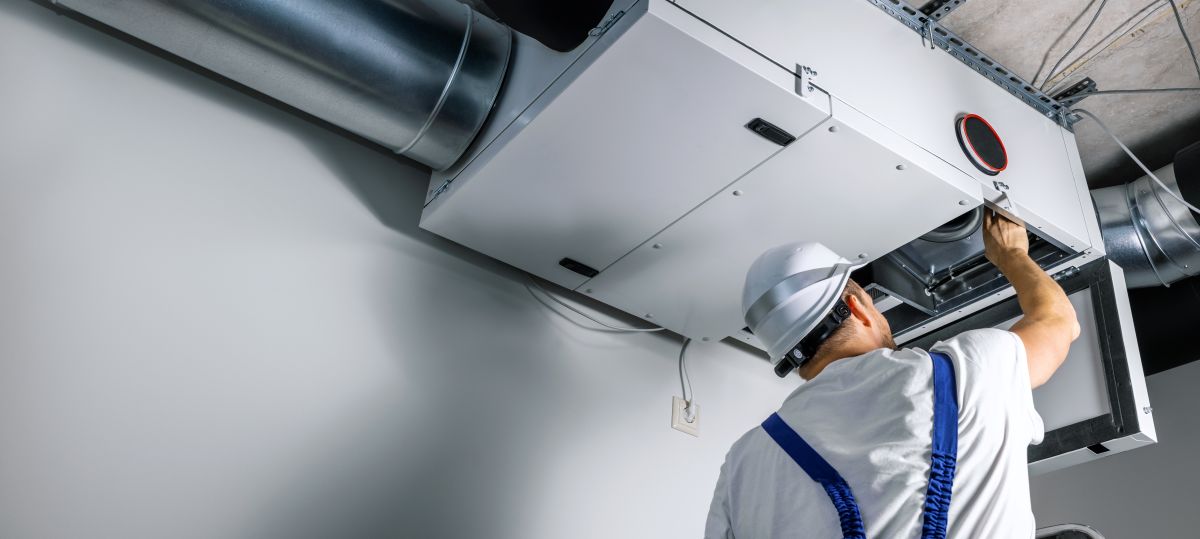What’s a Rich Text element?
The rich text element allows you to create and format headings, paragraphs, blockquotes, images, and video all in one place instead of having to add and format them individually. Just double-click and easily create content.
Static and dynamic content editing
A rich text element can be used with static or dynamic content. For static content, just drop it into any page and begin editing. For dynamic content, add a rich text field to any collection and then connect a rich text element to that field in the settings panel. Voila!
How to customize formatting for each rich text
Headings, paragraphs, blockquotes, figures, images, and figure captions can all be styled after a class is added to the rich text element using the "When inside of" nested selector system.
- This is a list item
- Another list item
- Numbered item
- Another numbered item
Some link
Healthcare facilities management teams are often plagued with the complexities tied to transitioning a project from planning, design, and construction to facilities operations. There are many aspects to ensuring a project is operational and regulatory ready on the first day of operations. A couple of critical aspects to consider are the active and passive fire protection assets and systems.
Active & Passive Fire Protection Systems
Active fire protection assets and systems rely upon a mechanical or electrical trigger for operations - think fire alarm smoke/heat detectors or fire sprinklers. Both of these examples require the detection of smoke or heat to activate. Alternatively, passive fire protection systems do not require a mechanical or electrical trigger - think fire/smoke barriers and doors. These passive features inherently resist the passage of fire and/or smoke.
Both active and passive fire protection systems are imperative to the total fire and life safety approach within a hospital. Ensuring these systems are operational and regulatory ready on the first day of operations is an acute aspect of facilities management. However, too often there are many coordinated operational efforts, such as space naming nomenclature, asset tagging, ensuring the recurring preventative maintenance tasks are in the Computerized Maintenance Management System (CMMS), and others, that are missed during the transition process. Each of these aspects plays a vital role in operations. This aspect is even more essential when time is not a luxury, like during an emergency situation.
Commonly Missed Areas During Project Transitions
Space Naming Nomenclature
When considering space naming nomenclature, the facility must have a source of truth tied to spaces. Most hospitals or healthcare systems have over fifty technology systems that rely on space naming nomenclature. A typical project has architectural room numbers and space names and then a few times throughout the project, the room names and numbers are changed. This even occurs on many projects after the fire alarm system has been programmed. In a recent 5-story, 150,000 square foot tower expansion, the re-naming and numbering of just the fire alarm system added almost $25,000 of unnecessary cost to the project! This is unnecessary because if the right players were at the table earlier then the correct approach would have been established. ASHE and FGI worked on a collaborative space naming nomenclature industry standard that can be accessed HERE. This document should serve as a great starting point for discussion and deviations should be documented as to the why behind the deviation occurred. For example, some technology systems have character limitations, so longer space names might have to utilize abbreviations to accommodate the system limitations.
Another best practice is to think with the end in mind. An example of this is that the hospital or healthcare system likely has multiple operating rooms; however, if the space includes what it is called in the field, such as “Operating Room #1”, then it makes it more difficult to query the total number of operating rooms. There are often ways to include this meta data in a separate manner to permit both needs. The point is that it’s important to know the limitations of each system used and have key discussions around each point.
Asset Tagging
Regarding asset tagging, there are many important aspects tied to fire protection assets and systems. Remember to start with the end in mind - consider what Inspection, Testing, and Maintenance (ITM) system is or will be used by the hospital. A hospital can choose to leverage the internal CMMS, which is a best practice. However, this often takes a bigger internal lift and as a result is often not the first choice. Understanding the type of inventory method, such as 2d barcode vs a QR code (and the pros and cons of each) is important. QR codes can hold more data, but this often is not needed for fire protection systems. Consider asset tag locations: When thinking about the location on a smoke detector, is the head or the base the programmable component? This can vary by the manufacturer but can make a difference on how assets are retired and retagged in the future. By asset tagging the programmable component, the hospital adds the ability to track and perform failure modes and effects analysis more easily. Also consider the location when accounting for ceiling height. When the smoke detector is on the deck of the central plant and it is 30’0” above finished floor, is the asset tag still located on the asset? This is a best practice, but can sometimes have repercussions, such as the speed on locating the asset if plans indicating asset numbers are not created. For passive fire protection systems, such as fire doors, considering tag placement is important for future operations. If the tag is placed on the door frame, then there is a chance it could inadvertently get painted over during touch-up painting.
Lastly, newer {built to any edition after IBC (2018) or NFPA 101 (2018)} high-rise hospitals and hospitals containing smoke evacuation systems must have integrated fire protection testing in accordance with NFPA 4. It must be performed prior to issuance of certificate of occupancy. The primary premise of integrated system testing is end-to-end to ensure that all programming logic and all ancillary life safety features are operating according to design. For example, when a smoke detector is activated, the fire alarm system programming triggers the smoke compartment doors to close and sound the notification appliances on the floor above and below to activate. ASHE created a book outlining the requirements of NFPA 4 and how to develop an integrated system test plan. It can be purchased HERE.
Recurring PM Tasks in CMMS
Lastly, ensure that the preventative maintenance schedules, tasks, assignments, details, etc. are inserted into the CMMS prior to occupancy. Regulatory compliance starts on day one of occupancy. Within the first month of occupancy, there are several ITM procedures that must be completed. Ensuring the CMMS is set up prior occupancy is immensely beneficial to operations. The CMMS serves as the source of truth for when the asset and system ITM is being completed and documented. Without having the assets tagged, the spaces appropriately named, the CMMS issuing preventative maintenance work orders, an extra burden is placed on the facilities operations team to ensure. Everyone in the PDC process plays a role to ensure that facilities are operational and regulatory on day one.
If you can account for at least these three commonly missed areas prior to your project going operational, you will find your entire transition will be smoother, much more digitally organized, and regulatory ready. Even at a moment’s notice. At the end of the day, that is really the goal we should all be striving for in the organization and dependability of our healthcare facility management systems.
Active and passive fire protection systems - 3 commonly missed areas during project transitions
About the author

Josh Brackett, PE, SASHE, CHFM
System Director Facilities Services, Regulatory - Banner Health & Co-Founder & HFM Fanatic - Legacy FM (legacy-fm.com)
Legacy FM
Joshua Brackett, PE, SASHE, CHFM is the system regulatory director of facilities operations at Banner Health. He offers numerous perspectives into health care facilities management, fire protection and life safety, and codes and regulatory compliance due to his diverse background. Starting his career in fire protection design at a national engineering firm, he gained a strong foundation in codes and standards. Josh leveraged this technical expertise to build relationships across the nation at the American Society for Health Care Engineering (ASHE) through his work with the Sustainability and Regulatory Affairs Committees. Later transitioning to a fire protection contracting company, he developed regulatory processes and procedures for hospitals across Arkansas and bordering states. As the system special projects manager for support services, he led regulatory compliance, energy management and process improvement at Arkansas’ largest health care organization, Baptist Health. Josh also cofounded Legacy FM, a nationwide company focused on developing education and training programs for facilities management teams that empower the men and women that keep our buildings running. A licensed fire protection engineer with senior status at ASHE (SASHE) and a Certified Healthcare Facilities Manager (CHFM), he is ASHE faculty for ASHE’s educational programs and an active member of ASHE’s Regulatory Affairs Committee, Health Care Code & Standards Review Committee of the National Fire Protection Association (NFPA) and several other NFPA committees. He also serves on several projects for the NFPA Research Foundation.










.svg)














.svg)






.svg)
.svg)
.png)